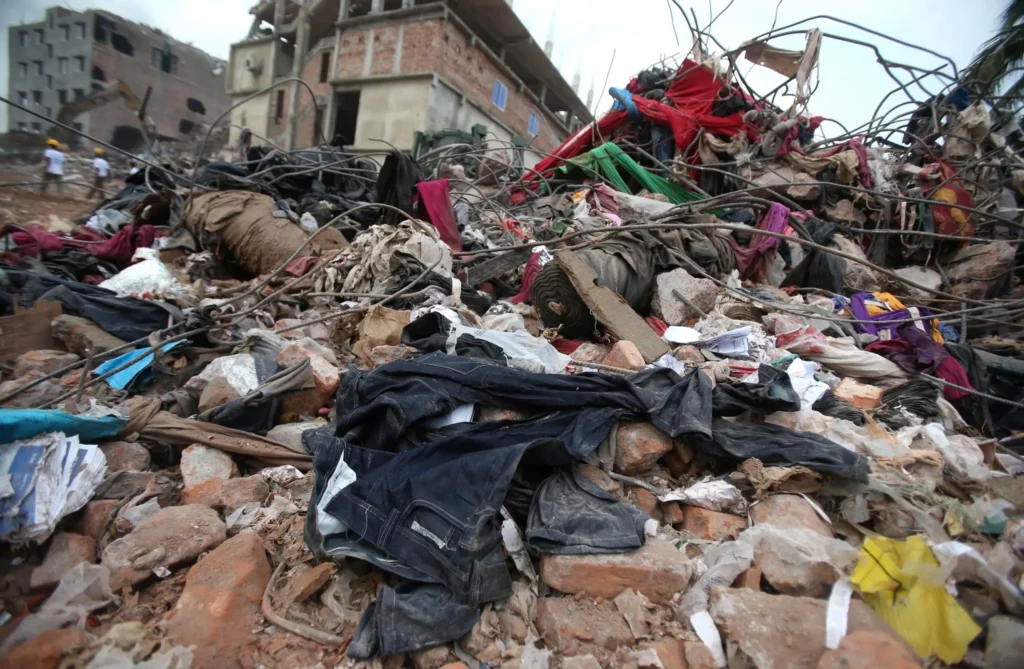By Andie Salazar
Remember those cow print pants you bought last year? Or the fuzzy bucket hat you only wore once? Those are micro-trends. Even that adorable, green House of Sunny dress? Sadly, yes that’s a micro-trend, too.
The fashion industry has changed drastically over the last decade. Trends in fashion come and go faster than usual these days, thanks to social media. As quickly as these trends appear, they seem to fall out of style before they are even delivered to your door.
These quick fashion turnarounds used to be called “fads.” Today, this phenomenon is called a “micro-trend” defined as a short-lived fashion cycle that gains popularity through social media apps like TikTok and Instagram.
Although these cycles only last 3-5 years, the impact they have on the environment is long-lasting. To keep up with micro-trends, clothing companies must manufacture products at an impossibly fast rate. Companies like Shein are notorious for producing “fast fashion” to stay relevant to these trends. Fast fashion is a growing topic of debate in the past years as companies trade quality for quantity. Demand for trendy, inexpensive clothing pushes these organizations to produce more products than ever before. As a result, the textile industry outsources manufacturing to countries where labor is cheaper. As we know, cheaper labor often is accompanied by appalling conditions for workers, inadequate wages and unethical practices.
Fast fashion practices have allowed consumers to buy clothing at shockingly low prices. This may seem like a win to someone who is looking for a bargain, but low-quality garments meet their end quickly. The less monetary value an item has, the more likely it is to end up in a landfill sooner rather than later. In addition to personal consumer waste, the fashion industry is responsible for up to 8% of global carbon emissions. It is reported that by 2050, the fashion industry will use up to a quarter of the world’s carbon budget.

So, what’s the solution? How does our society fix an industry named the second-largest polluter in the world?
Here’s a start:
Thrifting
Thrift stores are a great alternative for those looking for fast fashion prices without the environmental impact. Thanks to TikTok, thrifting has gained popularity with more consumers opting to shop at second-hand stores. Thrifting also helps communities directly as many thrift stores are run by local charity organizations. It’s also good practice to donate your clothes to these stores when the time comes.
Quality over quantity
A key contributor to fast fashion and micro-trends is overconsumption. Look to buy items made with quality materials that will last in your closet. Higher quality clothing will limit the amount of repurchasing you have to do in the future. Brands that offer quality items often have sustainable practices as well. That being said, higher quality often equals higher price. This may be a jump scare to your wallet if you are used to buying $6 shirts from Shein. But, buying less for a higher price may just even out in the long run.
Find your personal style
As fashion designer, Oscar de la Renta once said, “Fashion is about dressing according to what’s fashionable. Style is more about being yourself.” Your wardrobe should reflect who you are and what you love, not what Sally on TikTok said was going to be “hot for summer”. It is important to learn how to distinguish what is trendy from what you actually like. Let your style dictate what you buy, not micro-trends. Also, the more you know about your personal style, the less clothing you will buy. It sounds crazy, but it’s true.




Andie, I think this was a great blog post topic. It is definitely an issue that clothing brands need to keep in mind and combat. I think this issue also stems a lot from pushing the mentality that things go out of style or that if something becomes popular it is no longer cool. If the collective instead doesn’t label these items as out of style or ‘chuegy’ and shame those that enjoy them because they are popular, people will not feel the need to no longer wear them so quickly and will continue to enjoy the pieces.
Andie,
I’m so happy you chose this topic! I think it is so important, and for all the praise fast fashion gets in the media, it deserves even more criticism. The fast-fashion brands pose a complex debate, especially amongst people our age. While the monetary value of these items seems appealing to many college-aged kids, they aren’t thinking about the long-term negative impacts these brands contribute to. Also, I think in the end people end up spending a lot of money on inexpensive items because they justify buying more things at once, and doing so more frequently.
I also love your suggestion of finding one’s personal style. I think being confident in what one likes and keeping their wardrobe fit to their liking would reduce these micro-trends significantly. That being said, I don’t think there’s an issue with being influenced or inspired by someone else, but keeping morals and values into account simultaneously is important.
Andie,
Nice job, I really enjoyed your article. I have generally prefered quality to fad. However, with champagne taste and a beer purse, I keep my eye on sales while ballancing my budget on thrift stores and deals when they come my way. I eventually accumulated way more coolstuff than I needed. One of the funny things about life is the desire to accumulated more. I enjoyed searching out unigue, individualistic items to add to my wardrobe and home that represented what and who I am. Only to one day downsize and realize how much energy it aventually took to maintain evereytthing. Repurposing is such useful option towards global warming
Hi Andie, I really enjoyed reading your article! I have definitely seen and even participated in some micro trends and have seen the rapid fall of them on social media. They often just collect dust or go to waste after the trend is over which contributes to the problem of clothing waste and its negative impacts on the environment. I really liked how you included solutions at the end of the article. I feel like oftentimes people feel discouraged when it comes to wanting to follow certain fashion trends but can’t afford or don’t have access to shop sustainably. I think that you gave some great options for people to consider doing in the future to avoid more unnecessary clothing consumption.
Hi!
I think that this is a really interesting and relevant blog topic. I also wrote my blog on trends of sorts. I think it’s really bizarre how quickly things change and the reasons behind why they lose or gain popularity throughout time. I think the craziest part about trends is that os is never usually a specific reason behind why they change. There are so many influential factors behind why things change in our society.
I think is such an interesting blog topic because I definitely am someone who fell for micro-trends, during the pandemic especially. It is so interesting to see how quickly trends come and go. I remember seeing the trend of platform shoes a few years ago and I refused to cave into the trend and thought it was ugly. Well, fast forward to today, I own several platforms shoes from sneakers to sandals. I think this is an interesting topic because it examines fast fashion versus quality sustainable clothes. I would rather have something that is more sustainable and quality fabric, but I do fall for the trends and cheaper clothing, especially as a college student.
Andie,
I am glad to see someone write about this topic! I love how you included alternative methods to prevent the harmful effects of purchasing from fast fashion brands. I think it is silly how obsessed our culture has become with micro-trends. I think they are particularly prominent amongst high school and college students on a budget. However, I think that if this issue got more attention, micro-trends could be minimized. Thrifting, buying quality products, finding your style, and even trading clothes with friends could really help. I personally think a decent amount of out generation can be quite creative when it comes to clothing, we just need to work on it together.